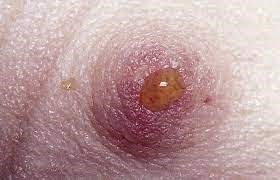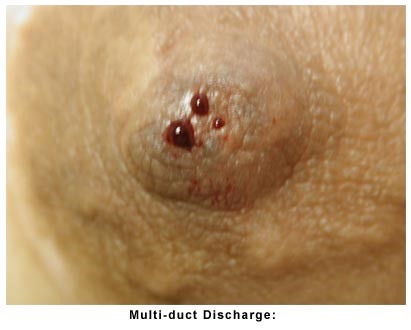Nipple Discharge
Nipple discharge
Nipple discharge can be alarming, but it is rarely a sign of breast cancer. Despite the fact that nipple discharge is relatively common, it is benign in most cases and generally causes anxiety and fear of cancer among women. Discharge from the nipple can be a natural reaction of your body when the nipple is compressed.
Symptoms of a malignant disease (such as breast cancer) include discharge that:
- Discharge appears without squeezing the nipple
- It only occurs in one breast
- Appears as bloody or clear yellow
Nipple discharge can also be caused by an infection or other disease that needs to be treated.
Except for cases when a person is breastfeeding, any type of liquid that comes out of the nipple is called breast discharge.
These secretions come out of the same hole that milk comes out of during breastfeeding. These secretions may come out from both breasts at the same time or from one of them, spontaneously or when the breasts are pressed. They may be milky, yellow, green, brown or even bloody. The concentration of these secretions varies from thick and viscous to thin and watery.


In dealing with nipple discharge, it is necessary to pay attention to the following points
- Color and type of secretion: milky, purulent, yellow and transparent, watery, bloody and bloody, green, blue, brown and gray secretions.
- Discharge from one or both breasts
- Discharge from one or more nipple openings
- Spontaneous discharge of fluid or its discharge with pressure between the fingers
- The presence or absence of palpation of the accompanying mass
- Age of the patient
- Hormonal status of the patient (taking hormonal drugs, pregnancy, breastfeeding, menopause, etc.)
Blood discharge
One of the most important types of breast secretions, which are important in terms of cancer evaluation, are nipple blood secretions. Although, bloody discharges are caused by benign breast diseases in most cases, they are associated with cancer more than other types of discharges, so they need to be carefully investigated.
In case you see red or pink secretions at the exit of the mammary ducts, it must first be determined whether the secretions are really blood or not! Then the doctor will give you a detailed history and complete examination. Blood secretions that come out spontaneously, are accompanied by a mass, come out of a breast and a duct, require more detailed evaluations; which includes mammography, ultrasound, MRI or laboratory examination.
In some cases, it may be necessary to surgically remove the duct that has a suspicious discharge. Bloody or secretions may also be seen at the end of pregnancy and breastfeeding. The cause of such a situation is the increase in blood vessels in the breast tissue during pregnancy and early lactation, which usually resolves shortly after birth delivery.
Watery secretions
Watery secretions are completely transparent and thin, and after bloody secretions, they are the most important type of secretions that should be considered in terms of cancer evaluation and are examined like bloody secretions.
Purulent secretions
These secretions are usually caused by infections. In most cases, purulent secretions are unilateral and accompanied by signs of inflammation such as redness, pain and stiffness of the breast. During the examination, secretions usually come out of several ducts. Breast duct infections often occur in women who are breastfeeding, so they are more common in reproductive age, but they can also occur in menopause.
Colored secretions
You may have thick colored secretions coming out of several breast ducts. These secretions, which are characteristic of breast duct expansion, are often bilateral and their color can be white, yellow, brown, green, blue or gray. Sometimes it is possible that different colored secretions come out of one breast from several ducts. These secretions may also be accompanied by itching and burning of the nipple. Breast duct dilatation is actually the widening of the main ducts of the breast with age. This condition is not related to the occurrence of breast cancer and is completely benign.
Physiological and natural secretions
In 60% of non-lactating women, if the nipple is gently pressed between two fingers, a small amount of liquid will come out. This secretion is physiological and natural and its color varies from white to yellow, green, brown and blue or black. These secretions usually come out after a warm bath or manipulation of the nipple, they come out with pressure and non-spontaneous and from several ducts, they are usually not bloody and are more common in women who have had several pregnancies.
To get more information on nutrition, you can visit the Breast Diseases Clinic of Motamed Jihad Academic Research Institute or contact the numbers below.
Consultant contact number: 021-66404020 / 09124885127
References
- Breast cancer facts & figures 2019-2020
- Komen.com/about breast cancer/risk factors
Compiled, written and translated by:
Dr. Ahmad Fazilat
Faculty member, Dept of Genetics, Motamed Cancer Institute, ACECR


